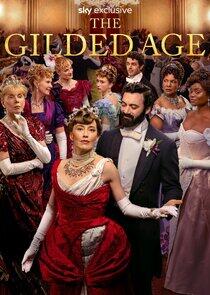Royal Institution Christmas Lectures - Season 42 / Year 2007

Season 42 / Year 2007

Episodes

Back from the Brink, the Science of Survival: Peak Performance

Back from the Brink, the Science of Survival: Completely Stuffed

Back from the Brink, the Science of Survival: Grilled and Chilled

Back from the Brink, the Science of Survival: Fight, Flight and Fright

Back from the Brink, the Science of Survival: Luck, Genes and Stupidity
Recently Updated Shows

The Repair Shop
The Repair Shop is a workshop of dreams, where broken or damaged cherished family heirlooms are brought back to life.
Furniture restorers, horologists, metal workers, ceramicists, upholsterers and all manner of skilled craftsmen and women have been brought together to work in one extraordinary space, restoring much-loved possessions to their former glory.
Many of these items have incredible stories behind them and a unique place in history: from an accordion played in the Blitz by a woman who is now in her 90s, to a beautifully crafted clock made by a father who was completely blind; a Pinball machine that is currently being used as a kitchen counter, and a Davenport desk with its trademark fake drawers which fooled burglars - and their crowbar.
The Repair Shop is an antidote to our throwaway culture and shines a light on the wonderful treasures to be found in homes across the country.

Watson
In Watson a year after the death of his friend and partner Sherlock Holmes at the hands of Moriarty, Dr. John Watson resumes his medical career as the head of a clinic dedicated to treating rare disorders. Watson's old life isn't done with him, though — Moriarty and Watson are set to write their own chapter of a story that has fascinated audiences for more than a century. Watson is a medical show with a strong investigative spine, featuring a modern version of one of history's greatest detectives as he turns his attention from solving crimes to addressing the greatest mystery of all: illness, and the ways it disrupts our lives.

Project Runway
Project Runway designers are given an opportunity to launch their careers in fashion.

The Gilded Age
The American Gilded Age was a period of immense economic change, of huge fortunes made and lost, and the rise of disparity between old money and new.
Against this backdrop of change, the story begins in 1882 — introducing young Marian Brook, the orphaned daughter of a Union general, who moves into the New York City home of her thoroughly old money aunts Agnes van Rhijn and Ada Brook. Accompanied by Peggy Scott, an accomplished African-American woman, Marian inadvertently becomes enmeshed in a social war between one of her aunts, a scion of the old money set, and her stupendously rich neighbors, a ruthless railroad tycoon and his ambitious wife, George and Bertha Russell.
In this exciting new world that is on the brink of the modern age, will Marian follow the established rules of society, or forge her own path?

The Sandman
A rich blend of modern myth and dark fantasy in which contemporary fiction, historical drama and legend are seamlessly interwoven, The Sandman follows the people and places affected by Morpheus, the Dream King, as he mends the cosmic — and human — mistakes he's made during his vast existence.